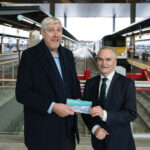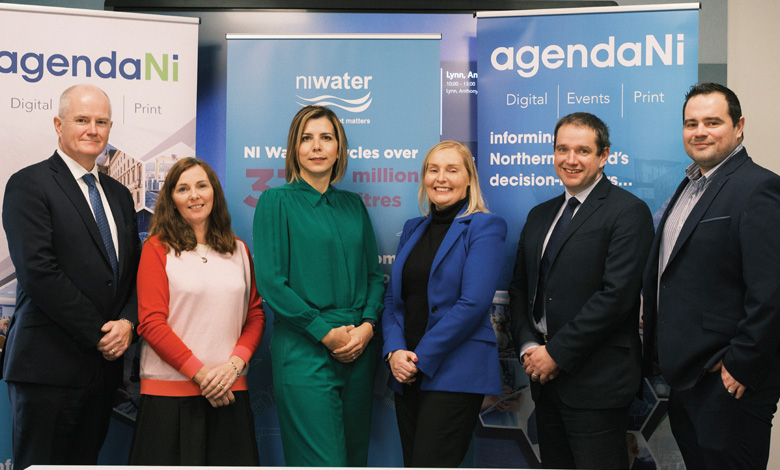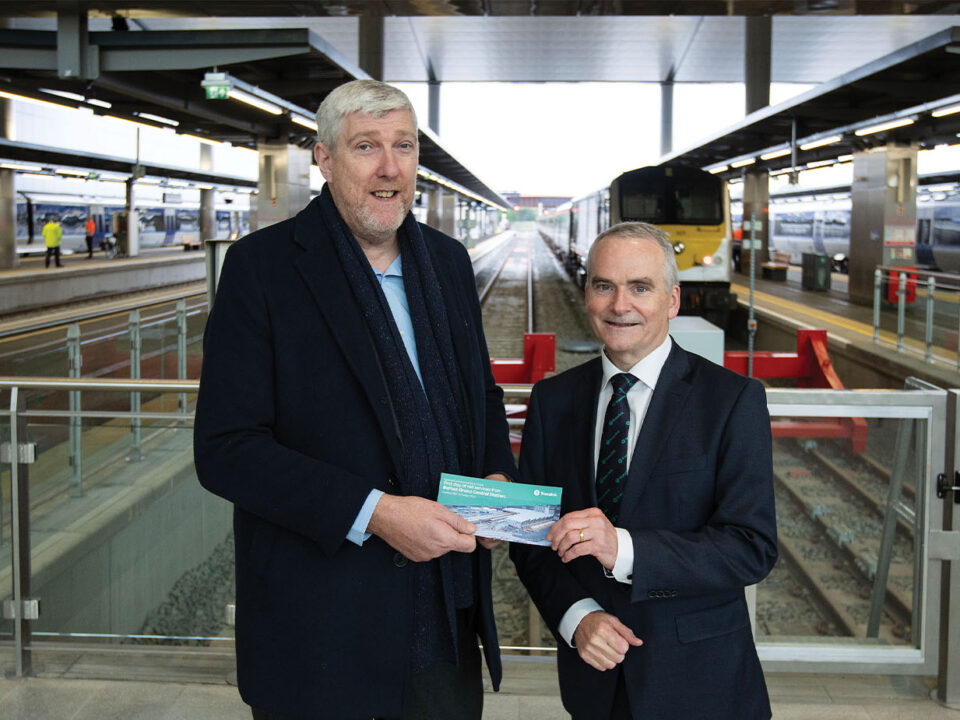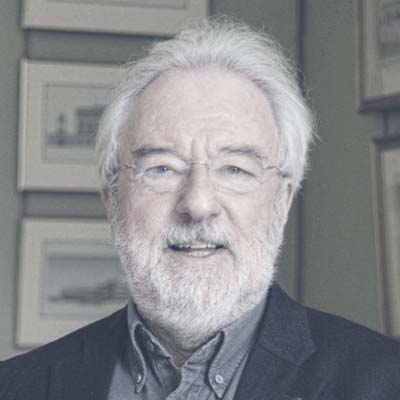
OEP: Agri-industry leading driver of biodiversity decline
22nd November 2024
Minister John O’Dowd MLA: Planning for better outcomes
25th November 2024Ulster University lecturer in planning and development, Gavan Rafferty, explores the evolving role of planning in addressing public health, wellbeing, and liveability, using recent pilot projects in Belfast as case studies.

Rafferty’s project, which he conducted alongside Belfast City Council and other agencies, was inspired by the need to understand how health-centred, place-based interventions could reshape Belfast’s urban environment, especially in the wake of Covid-19 pandemic. His research aimed to promote a more vibrant, equitable, and sustainable city, addressing long-standing social, environmental, and infrastructural challenges.
Discussing the relationship between urban planning and public health, Rafferty notes that “the built environment begins to shape and influence us in our daily lives and our practices,” and that planning decisions affect not only physical surroundings but also “social wellbeing”. Further contextualising that, historically, urban planning has been centred on responded to health crises in cities, and today, health is increasingly a priority in planning systems across Ireland and Northern Ireland.
He adds that the Strategic Planning Policy Statement uniquely emphasises “improving health and wellbeing” as a core planning principle, underscoring a renewed commitment to using planning as a tool to enhance public health outcomes.
The pilot initiative of which Rafferty refers sought to analyse three Belfast-based interventions: the introduction of cycle lanes in the city centre, the regeneration of the Millennium Quarter (including social street life initiatives), and the revitalisation of the Cathedral Gardens.
Through these projects, he says that his team assessed how urban planning could support health and wellbeing, gather public feedback, and draw actionable insights to improve city liveability. This work, he adds, also revealed the complexity of defining and achieving “liveability”, especially in a city like Belfast, where health, transport, housing, and safety challenges intersect with the city’s unique sociopolitical history.
Rafferty outlines that the research found that a significant majority of survey respondents viewed health-promoting, liveable city spaces as essential. However, he states that, when asked if Belfast’s current infrastructure supports active and healthy lifestyles, the majority of respondents felt it “does very little in its current shape or form,” citing improvements in public transport, affordable housing, and climate action as urgent priorities.
He also notes that “liveability” encompasses “safe, attractive, inclusive, and environmentally sustainable places,” a definition that aligns well with health goals, Rafferty noted. However, he also says that translating this concept into planning policies and measurable outcomes remains challenging, noting that there is a need for more “cross-sectoral data sharing” to make “informed, health-centred planning decisions”.
Rafferty also states that, in Northern Ireland, limited data-sharing agreements and fragmented policies make it hard to monitor wellbeing outcomes and measure urban change, adding: “Effective liveability initiatives require interdepartmental coordination and the integration of health data.”
Recommendations for decision-makers
Rafferty offers several recommendations which he states can “overcome systemic barriers and promote liveability in towns and cities”.
The first recommendation is the adoption of a liveability lens in decision-making, clarifying that planners and policymakers should apply a liveability framework that prioritises public health, environmental sustainability, and social inclusivity, making these values central to urban planning decisions. This approach, he states, could also “resonate more with the general public”, who he asserts would find the term “liveability” more relatable than abstract concepts like “sustainable development.”
Secondly, he recommends the formalisation of informal engagement practices, as one of the project’s key takeaways was the potential for more “co-produced, bottom-up approaches” to planning. Pointing to survey findings that “citizens felt they were not able to influence decisions,” Rafferty emphasises that integrating informal community engagement processes could enhance citizen input in planning, especially in Belfast city centre, where public participation in decision-making remains low.
Rafferty’s third recommendation is the promotion of cross-sector collaboration. Stressing the importance of “intersectional approaches” that involve collaboration between planning, health, transport, and housing agencies, he states that addressing Belfast’s health and liveability challenges “requires cooperation beyond the planning sector”. He also recommends improving data-sharing protocols, allowing more comprehensive analysis of urban wellbeing.
His fourth recommendation is prioritising health and wellbeing as planning outcomes. While economic growth and development remain key priorities in urban planning, Rafferty advocates elevating health and wellbeing outcomes “on a par with, if not above, economic outcomes”, suggesting that developing explicit health and wellbeing frameworks to guide planning decisions and measure their effectiveness. By focusing on health outcomes, he asserts that planners could work more effectively across disciplines, as health represents a common goal shared by multiple sectors.
Concluding, Rafferty acknowledges that achieving these goals requires patience, flexibility, and a willingness to re-examine established planning assumptions, further arguing that focusing on liveability allows planners to address multiple interconnected challenges, such as access to services, quality of housing, environmental sustainability, and social cohesion, in a way that is relevant to citizens’ everyday lives.
By embracing “outcome-based” planning frameworks, he says that planning in Northern Ireland could become more responsive to public needs, adapting urban spaces to support well-being as well as economic vitality.





 Ossian Smyth TD
Ossian Smyth TD Florika Fink-Hooijer
Florika Fink-Hooijer Antoine Oger
Antoine Oger Laura Curtis-Moss
Laura Curtis-Moss Anthony Costello
Anthony Costello Anja Murray
Anja Murray Niall Ó Donnchú
Niall Ó Donnchú Mike Savage
Mike Savage Brian Carroll
Brian Carroll Claire Downey
Claire Downey Oisín Coghlan
Oisín Coghlan Stephen Onakuse
Stephen Onakuse Kevin O’Sullivan
Kevin O’Sullivan Susan Hegarty
Susan Hegarty Hendrik W van der Kamp
Hendrik W van der Kamp Philip Nugent
Philip Nugent Adrian Smyth
Adrian Smyth  Ainhoa Gonzalez Del Campo
Ainhoa Gonzalez Del Campo  Geoff Dooley
Geoff Dooley  Clare Pillman
Clare Pillman  David Greenfield
David Greenfield Danielle Conaghan
Danielle Conaghan Peter McEvoy
Peter McEvoy Triona McGrath
Triona McGrath J Owen Lewis
J Owen Lewis Gavin Smith
Gavin Smith Imelda Hurley
Imelda Hurley Lucy Gaffney
Lucy Gaffney Dr Venkatesh Kannan
Dr Venkatesh Kannan Kevin Hegarty
Kevin Hegarty Eimear Cotter
Eimear Cotter Aditya Arora
Aditya Arora Patric Child
Patric Child Eleanor Roche
Eleanor Roche Andy Bleasdale
Andy Bleasdale Andrew Muir MLA
Andrew Muir MLA Chris Hewitt
Chris Hewitt Francesca Racioppi
Francesca Racioppi Christopher Hammond
Christopher Hammond Laura Díaz Anadón
Laura Díaz Anadón Lorna McAdoo
Lorna McAdoo Conor Murphy
Conor Murphy  Mark Horton
Mark Horton  Niall McLoughlin
Niall McLoughlin  Zoe Kavanagh
Zoe Kavanagh Niall Ó Donnchú
Niall Ó Donnchú Venkatesh Kannan
Venkatesh Kannan David McGee
David McGee Anna Rose
Anna Rose Paul Hogan
Paul Hogan








